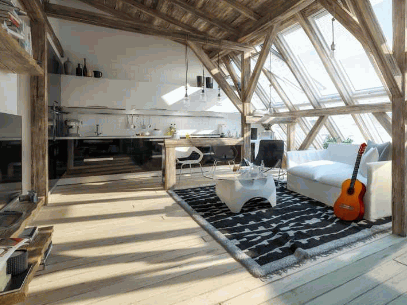
Thinking of maximizing your home's potential? A loft conversion might be the perfect solution.
This article guides you through the ins and outs of loft conversions, from understanding what they are to exploring the various types available, such as dormer and mansard options, ensuring compliance with planning permission and building regulations.
We look at the benefits, typical timelines for construction, and factors that can influence the process, including insulation installation and stair access considerations. Additionally, we share tips to ensure your project runs smoothly.
Dive in to discover how to transform your attic into a valuable living space.
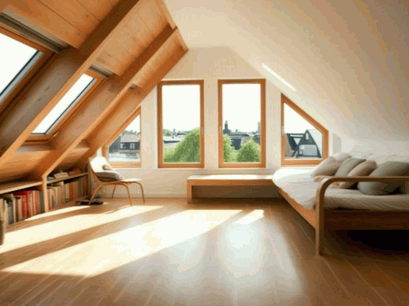
Table of Contents
A loft conversion is a popular home renovation project in the UK that involves transforming an unused loft space into functional living areas, thereby enhancing the property’s overall accommodation needs through careful planning and execution. This type of construction requires careful planning and must adhere to local authority guidelines regarding planning permission and building regulations, often involving collaboration with the planning office. Engaging a skilled project manager is often essential to ensure that the loft conversion project adheres to the established construction timeline and meets all relevant standards, including those during the design phase.
Explore further: Is A Loft Conversion Worth It
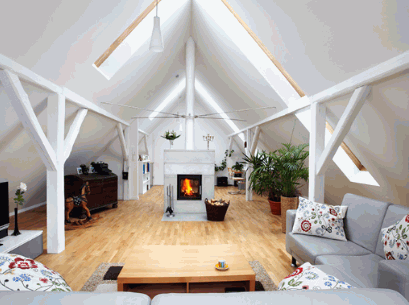
There are several types of loft conversions, each catering to different architectural designs and accommodation needs, including the dormer conversion, mansard conversion, Velux loft, and hip-to-gable conversion, all of which can significantly enhance the functionality of a home, while considering planning control requirements.
A dormer loft conversion involves extending the existing roof to create additional headroom and living space, making it a popular choice for homeowners looking to enhance their property’s functionality, with attention to structural calculations and roof work. This type of conversion not only maximizes usable space but also adds character and elegance to the overall design of a home.
Dormers come in various styles, including gable, hip, and flat, each offering unique aesthetic and structural advantages. The costs associated with these conversions can vary significantly based on the size and complexity, typically ranging from $20,000 to $50,000. It's essential to ensure that these conversions comply with local building regulations to avoid future complications.
Once approved, homeowners can enjoy custom features such as skylights, built-in storage, and en-suite bathrooms, making their loft space both functional and stylish.
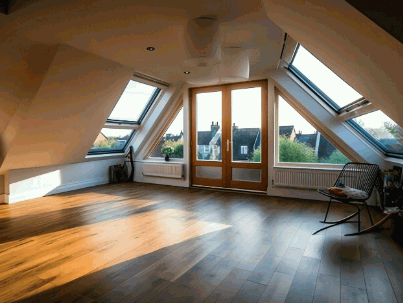
A mansard loft conversion is characterized by a steeply sloped roof that maximizes interior space, providing a unique aesthetic while often requiring planning permission from the local authority due to its structural alterations.
This architectural feature not only enhances the overall appeal of the property but also allows for increased square footage, transforming unused attic space into functional living areas, designed with the support of an architect survey. Achieving such a transformation is not without its complexities.
Team roles are crucial throughout this process; a dedicated architect, a structural engineer, and a builder typically collaborate to address the various aspects of the design and execution.
While there are notable advantages to a mansard conversion, such as increasing property value and improving livability, it is vital to thoroughly assess both the benefits and potential hurdles before commencement.
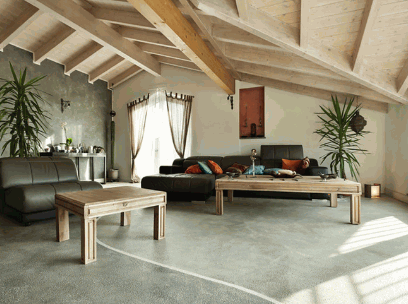
A hip-to-gable loft conversion involves altering the sloped roof of a property into a vertical gable end, effectively expanding the available roof space and enhancing the accommodation needs of the home.
This transformation not only redefines the roofline but also opens up new possibilities for interior design and usage, often involving complex conversions. When considering this change, it's essential to evaluate various design considerations, such as the alignment with neighboring structures and the aesthetic impact on the neighborhood.
Homeowners should also take into account relevant building regulations that govern structural alterations, ensuring compliance with local zoning laws and safety codes, possibly requiring consultation with Building Control.
Ultimately, a successful conversion can significantly elevate both the functionality and value of the property.
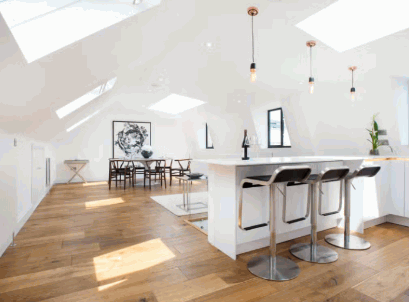
A Velux loft conversion is a popular option that utilizes roof windows to create a bright and airy living space without significant structural alterations, often streamlining the planning permission process due to its minimal impact on the property’s exterior.
This innovative approach not only transforms underutilized spaces but also has numerous advantages that homeowners seek, including improved electrics and plasterboard installations for enhanced livability. One of the most compelling benefits is the abundance of natural light that roof windows allow, which can enhance mood and create a welcoming atmosphere. Such conversions often improve energy efficiency by utilizing natural light, reducing the need for artificial lighting during the day.
Understanding these factors not only helps optimize the benefits of conversion but also supports long-term sustainability, integrating features like skirtings and improved home insulation.
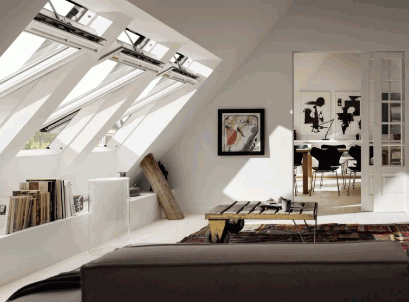
Loft conversions serve multiple benefits for homeowners, such as increasing living space, adding significant value to the property, and offering a cost-effective alternative to moving, making them an attractive option for many families in the UK.
A loft conversion significantly increases living space, allowing families to accommodate their changing needs without the upheaval of moving to a larger home.
This versatile space can be transformed into a variety of functional areas that cater to different lifestyles. For instance, many homeowners opt to create additional bedrooms, providing a private retreat for teenagers or guests. This can be designed with built-in storage solutions to make the most of every inch.
Alternatively, a work-from-home trend has led to the emergence of home offices, equipped with natural light and modern amenities, ensuring productivity in a comfortable environment.
By planning efficiently and considering the unique requirements of the family, a loft conversion not only enhances living space but also fosters a more balanced lifestyle, engaging a comprehensive project team.
Adding a loft conversion can substantially elevate the value of a property, often recouping a significant portion of the investment made during the house renovation process.
In fact, statistics reveal that homeowners can see an increase of up to 20% in property value after completing such a project, making it a lucrative choice for many. This impressive boost stems from the dual benefits of additional living space and enhanced aesthetic appeal, both of which are highly sought after in today’s market.
To navigate this transformation smoothly, a skilled project manager plays a pivotal role. They ensure that every phase, from planning to execution, aligns with the vision while adhering to budget constraints. Here’s how a project manager contributes:
Ultimately, an efficient project manager can significantly enhance the overall experience, maximizing the value of the loft conversion and ensuring the investment pays off, with precise project timeline management.
Opting for a loft conversion is often a more cost-effective alternative to moving, as it can provide the extra space needed while avoiding the expenses of purchasing a new home. This option not only preserves the emotional ties to one's current residence but also opens up possibilities for customization and personal creativity in how that space is utilized.
When examining the financial implications, a loft conversion typically incurs significantly lower costs compared to the leaps involved in moving. Expenses skew towards renovation rather than hefty deposits and potential stamp duties.
Therefore, understanding these costs is crucial for homeowners contemplating their options.
A well-structured construction timeline can effectively minimize expenses, ensuring projects remain on schedule and within budget. Hiring skilled professionals who understand local authority regulations can further streamline the process. Regulatory compliance helps avoid costly fines and delays, reinforcing the importance of planning. When considering a home renovation, it's equally important to assess accommodation needs and select the appropriate type of loft conversion, such as a dormer conversion or a hips-to-gable conversion.
Ultimately, the decision between a loft conversion and moving hinges on both financial viability and personal preferences.
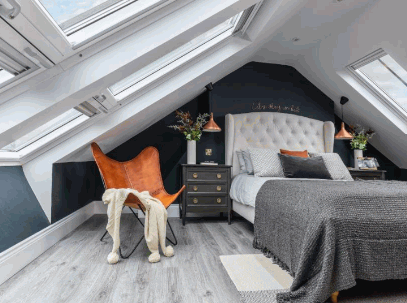
Loft conversions, such as a mansard conversion or a Velux loft, offer valuable additional space and can significantly enhance property value. The duration of a loft conversion project can vary based on several factors, but typically, the complete process can range from several weeks to a few months, starting from the planning and design stage all the way through to the construction phase.
The planning and design stage is critical in a loft conversion, requiring input from a project team that may include architects and structural engineers to ensure compliance with building regulations and to perform necessary structural calculations.
During this phase, understanding the complexities of your project is essential, as it not only sets the foundation for the build but also impacts practical aspects such as budget and timeline. Selecting the right professionals is paramount; they should possess experience and expertise in loft conversions, ensuring that the plans align with local authority guidelines. Adhering to these regulations can prevent potential legal complications that may arise later. Planning permission and understanding building control requirements are critical here. It’s advisable to develop a shortlist of skilled individuals by:
By investing time in this essential initial phase, individuals can ensure a smoother execution and a more satisfying end result.
Obtaining necessary permits is an essential step in the loft conversion process, as it involves securing planning permission from the local authority, which can vary depending on the type of conversion.
Understanding the various types of permits required is crucial to navigate this intricate journey. Typically, one may need planning permission for structural changes, along with building regulations approval to ensure safety and compliance.
The process for obtaining these permits usually begins with an application to the local authority, accompanied by detailed plans and sometimes consultations with neighbors.
It’s important to note that delays in this stage can significantly impact the overall construction timeline, leading to a ripple effect in scheduling and budgeting.
Pre-construction preparation is vital for a successful loft conversion, encompassing finalizing designs, scheduling, and ensuring that the project manager has coordinated all necessary resources to adhere to the project timeline. Proper planning of plasterboard installation and electrics is also crucial at this stage to avoid any disruptions.
This stage includes careful planning and organization, which are essential to ensure everything is in place before construction begins. Evaluating accommodation needs and ensuring the procurement of quality materials like skirtings and high-performance insulation is imperative.
Key elements of this process involve the procurement of materials, where selecting high-quality resources, such as sustainable skirtings and premium plasterboard, can significantly impact both the sustainability and aesthetic appeal of the project.
Scheduling inspections at various phases helps maintain compliance with building regulations and drives project momentum.
Communication with the project team, including contractors, designers, and other stakeholders, is crucial to clarify roles, establish timelines, and align expectations.
This coordinated effort sets a solid foundation for a smooth and successful build.
The construction phase is where the physical loft conversion happens, involving roof work that must comply with building regulations to ensure safety and structural integrity.
This stage is not just about hammering nails and lifting beams; it requires a team of skilled laborers who understand the complexities of structural engineering, insulation, and roofing systems.
During this phase, inspections by local authorities are typically mandated to verify compliance with building codes. Building control officers will check various aspects of the conversion. These inspections may cover:
| Inspection Type | Typical Focus Areas |
|---|---|
| Foundation | Integrity and stability |
| Framing | Alignment and material quality |
| Final Inspection | Overall safety and habitability |
Such meticulously planned procedures not only ensure a successful conversion but also foster a secure environment, laying the groundwork for future living spaces.
The finishing touches are crucial in a loft conversion, involving insulation installation, electrics, and interior finishes that transform the space into a livable area tailored to the homeowner’s preferences. Installing quality plasterboard and skirtings enhances both the functionality and aesthetic appeal of the space.
These elements are more than mere details; they significantly enhance both the aesthetics and energy efficiency of the space. Quality finishes not only elevate the overall design but also play a vital role in maintaining consistent temperatures, thereby reducing energy costs.
Homeowners often opt for features such as high-performance insulation, which reduces heat loss, and energy-efficient lighting that minimizes electricity usage. Common finishes include:
By carefully selecting these materials and finishes, homeowners can create a warm, inviting loft that meets their practical needs while also showcasing their unique taste.
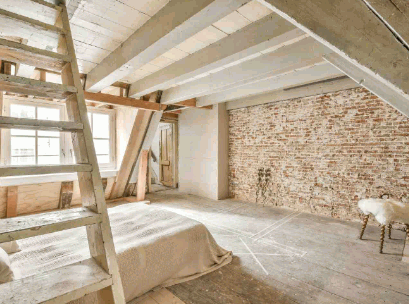
Several factors can influence the timeline of a loft conversion, including the size and complexity of the conversion, potential structural changes required, weather conditions during construction, and the availability of contractors.
The size and complexity of the loft conversion play a significant role in determining the overall project timeline, as larger or more intricate designs often require more time for planning, structural calculations, and construction.
When considering how different scales of conversion impact timelines, it’s crucial to recognize that simple loft transformations, such as adding basic insulation and a single space, can typically be completed in a matter of weeks. In contrast, more elaborate projects, which may involve extending the roofline or integrating complex design elements, like those seen in a dormer conversion or a mansard conversion, can extend the timeline into several months or even longer. For example:
Ultimately, the nature of the project significantly dictates not only the duration but also the level of detail and planning required to ensure the final result meets expectations.
Any necessary structural changes can lengthen the timeline of a loft conversion, as these modifications must meet building regulations and may involve additional inspections overseen by the project manager.
When initiating a loft conversion, it’s crucial to recognize that structural adjustments are often essential for ensuring stability and compliance. These adjustments might include reinforcing beams, modifying roof structures, or even upgrading insulation to adhere to energy efficiency standards. Consulting with architects and understanding local authority guidelines can help smooth this process.
By having an experienced leader at the helm, homeowners can navigate the complexities of these necessary transformations, ensuring that their dream project progresses as smoothly as possible.
Weather conditions can significantly impact the construction timeline of a loft conversion, particularly during roof work, as adverse weather may delay essential tasks and materials delivery.
Plus the obvious challenges posed by rain and snow, extreme temperatures can also halt progress on critical installations. When planning a loft conversion, such as a Velux loft, it’s crucial to recognize that even minor weather fluctuations can lead to significant scheduling hurdles.
By preparing for various weather scenarios, one can enhance efficiency and ensure that the project remains on track.
The availability of contractors can affect the overall project timeline, as skilled labor shortages or scheduling conflicts may delay the start or progress of the loft conversion.
To ensure a smooth process, it’s crucial to select the right contractor well in advance. When embarking on a project, you may find that not all contractors have the same level of availability, and some may be tied up with existing commitments. This is why scheduling becomes paramount, allowing ample time for necessary adjustments and preparations.
An early start on planning not only helps to avoid potential hiccups but also enables you to build a strong project team that can collaborate effectively.
A coordinated approach from the project team will significantly reduce the likelihood of unexpected delays, ensuring that your loft conversion proceeds efficiently and on schedule.
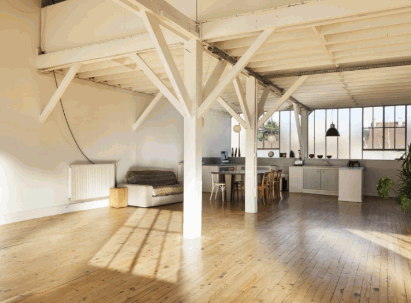
To ensure a smooth and efficient loft conversion process, it's essential to hire a reputable contractor, plan and prepare ahead of time, and maintain effective communication throughout the project.
Hiring a reputable contractor is critical for ensuring the success of a loft conversion, as their expertise directly influences the quality of work and adherence to the construction timeline.
When considering a contractor, it’s essential to evaluate several key factors. Their experience plays a significant role, as seasoned professionals bring valuable insights that can save time and money during the project.
Checking online reviews can also provide insights into past performance, revealing how they handle challenges and client communications.
Examining a contractor's previous projects offers a glimpse into their craftsmanship and style, helping you determine if they align with your vision.
Having a dedicated project manager to oversee the contractor's work ensures that everything runs smoothly, giving you peace of mind and keeping the project on track.
Planning and preparing ahead of time can significantly streamline the loft conversion process, ensuring that the project timeline aligns with the homeowner’s accommodation needs and expectations.
To achieve this, it is essential for homeowners to approach the planning phase methodically by following several key steps. First, establishing a realistic budget will help set clear financial boundaries for the project, allowing for a smoother progression without unexpected costs cropping up. Understanding the local building regulations is crucial, as this ensures compliance and prevents potential delays due to legal issues.
It's wise to prepare for possible disruptions during the construction phase, such as noise and limited access to certain areas of the home, which can be communicated effectively to all parties involved.
By laying this groundwork, the transformation of the loft space can proceed efficiently and with fewer unexpected hurdles.
Effective communication with the contractor is essential for a successful loft conversion, as it fosters collaboration and helps in addressing any issues that may arise during the construction phase.
Maintaining a consistent dialogue can significantly impact the overall outcome of the project. Regular meetings should be scheduled to discuss progress and any potential setbacks, ensuring everyone is on the same page.
Additionally, keeping open lines of communication includes providing timely updates and soliciting feedback from both parties. This proactive approach not only prevents misunderstandings but also encourages a more transparent working relationship.
By prioritizing these aspects of communication, the likelihood of a smooth and efficient loft conversion increases dramatically.
